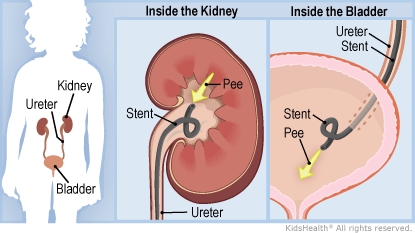- Home
- Humana Medicaid
- Kentucky Medicaid
- Medicaid extras
- Health and wellness
- Home
- Parents Home
- Allergy Center
- Asthma Center
- Cancer Center
- Diabetes Center
- A to Z Dictionary
- Emotions & Behavior
- First Aid & Safety
- Food Allergy Center
- General Health
- Growth & Development
- Flu Center
- Heart Health
- Homework Help Center
- Infections
- Diseases & Conditions
- Nutrition & Fitness Center
- Play & Learn Center
- School & Family Life
- Pregnancy Center
- Newborn Center
- Q&A
- Recipes
- Sports Medicine Center
- Doctors & Hospitals
- Videos
- Para Padres
- Home
- Kids Home
- Asthma Center
- Cancer Center
- Movies & More
- Diabetes Center
- Getting Help
- Feelings
- Puberty & Growing Up
- Health Problems of Grown-Ups
- Health Problems
- Homework Center
- How the Body Works
- Illnesses & Injuries
- Nutrition & Fitness Center
- Recipes & Cooking
- Staying Healthy
- Stay Safe Center
- Relax & Unwind Center
- Q&A
- Heart Center
- Videos
- Staying Safe
- Kids' Medical Dictionary
- Para Niños
- Home
- Teens Home
- Asthma Center
- Be Your Best Self Center
- Cancer Center
- Diabetes Center
- Diseases & Conditions
- Drugs & Alcohol
- Expert Answers (Q&A)
- Flu Center
- Homework Help Center
- Infections
- Managing Your Medical Care
- Managing Your Weight
- Nutrition & Fitness Center
- Recipes
- Safety & First Aid
- School & Work
- Sexual Health
- Sports Center
- Stress & Coping Center
- Videos
- Your Body
- Your Mind
- Para Adolescentes
Ureteral Stent
What's a Ureteral Stent?
A ureteral stent is a small plastic tube placed inside the to help urine (pee) pass from a kidney into the bladder.
A child may need a ureteral (yuh-REET-eh-rul) stent:
- after surgery to keep the urine pathway open
- if the ureter is narrow or blocked
- to make way for a kidney stone to pass

How Long Does a Ureteral Stent Stay In?
Some stents stay in for just a few days to a week. Others may stay in for several months. If your child has a stent, the urologist will let you know how long it's needed.
How Is a Ureteral Stent Removed?
A ureteral stent that's going to be in place for only a few days to a week usually has a string attached to the end of it. This string comes out of the urethra (where pee comes out) and is taped to the child's leg. This type of stent is removed either at home or in the doctor's office.
Stents that are in place for several weeks or months are removed by the urologist in the operating room.
How Can Parents Help?
A ureteral stent sometimes can be uncomfortable and cause some blood in the pee. Here's how to help your child feel more comfortable until the stent comes out.
Give medicines as directed:
- Medicine for bladder spasms: The stent can irritate the bladder, making it . This can be uncomfortable and make your child need to pee often. The stent also can cause pain with peeing, which sometimes is felt over the bladder or the back. Give the recommended medicine for spasms to help your child feel more comfortable. This medicine also can help reduce blood in the pee.
- Other medicines: If the doctor prescribed other medicines, give them exactly as directed.
Encourage your child to drink lots of caffeine-free liquids:
- Drinking and peeing a lot can help kids feel more comfortable and reduce blood in the pee.
- Send a water bottle to school or childcare to encourage your child to drink throughout the day.
Watch the amount of blood in the pee:
- It's normal for your child's pee to have some blood in it while the stent is in. As long as it's light (it may look like pink lemonade or cranberry juice), it's nothing to worry about.
Watch for constipation, which can make pain from a stent worse:
- Many kids have constipation after surgery or while taking medicine for spasms or pain. If your child is constipated, talk to the urologist. Often, medicines and diet changes can help.
Follow up with the as instructed so that the stent is removed on time.
When Should I Call the Doctor?
Call the doctor right away if your child has a fever with shaking chills, back pain, or pain while peeing.
Also call the doctor if your child:

© 1995- The Nemours Foundation. KidsHealth® is a registered trademark of The Nemours Foundation. All rights reserved.
Images sourced by The Nemours Foundation and Getty Images.